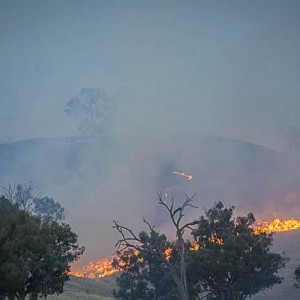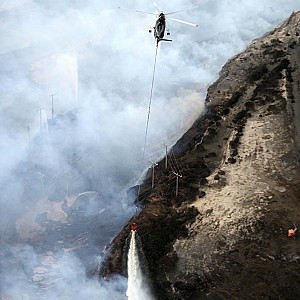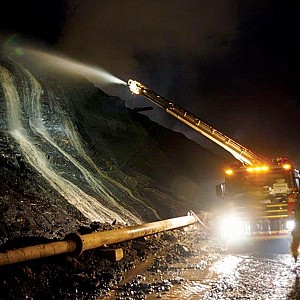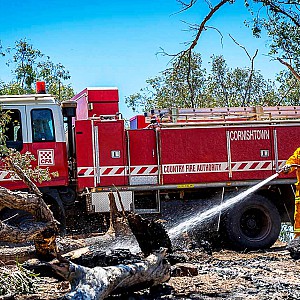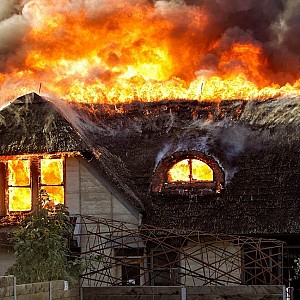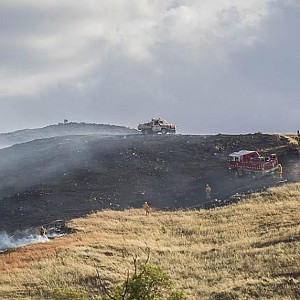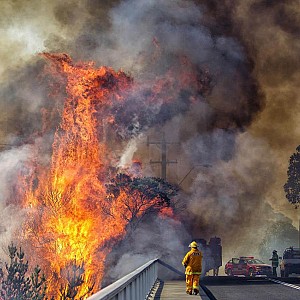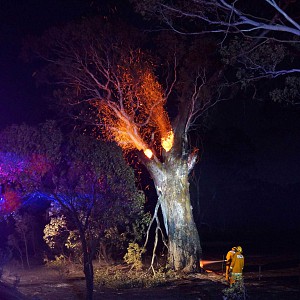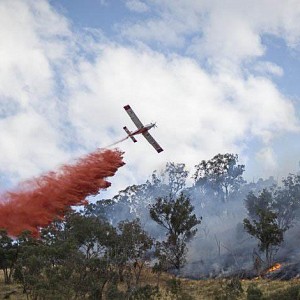by Commissioner Craig Lapsley, Emergency Management Victoria
The last few months have already seen a range of emergencies impact Victorian communities including a recycling plant fire, avalanches, shark sightings and landslips. Although it is still spring, we have already seen unseasonably warm temperatures across parts of eastern Australia and temperature records have been broken. Friday 22 September was Australia’s warmest September day on record and Mildura set a Victorian record reaching 37.7°C. Rainfall for the month was below average for northern and far eastern Victoria while unseasonably warm weather has seen dry conditions across the state, coming on the back of a warm winter.
The severity of any fire season is dependent on a factors, including the amount, location and timing of rain in the months leading up to summer, and at the moment we have not seen what would be described as an ‘average’ lead up. At the end of last month Incident Management Teams, Regional teams and the State Control Centre was activated to support the response to a number of private burn offs that were out of control with the warm and windy conditions across the state. The fire agencies responded to more than 50 bush and grass fires in a 24 hour period starting on the afternoon of Saturday 23 September. The SCC was also supporting a number of Incident Control Centres in Gippsland responding to major fires across East Gippsland, including fires near Buchan, Marlo and Dargo. Responding to bushfires in September is an early reminder that now is the time to be prepared – for both response agencies and the community. Our colleagues across the border in NSW are already being impacted by fire and heat. It has been dynamic and it has become busy very quickly. Accordingly, Victorian agencies have started their fire preparedness activities early to respond to the current conditions. Chief Officers Steve Warrington, Stephanie Rotarangi and Greg Leach are leading preparedness in their agencies to ensure we are in the best position possible going into what could be a busy few months. Briefings are currently being held across Victoria ahead of each summer season for emergency management personnel. This includes both volunteer and staff from various emergency management agencies, departments and organisations. These provide a chance for personnel to hear about key operational updates and changes ahead of the summer in addition to the seasonal outlook and expected conditions in their local area and more widely. We are prepared, we are ready and we are committed to working together to best protect the Victorian communities. In the coming weeks Victoria’s largest ever firefighting fleet will be available with a suite of 49 aircraft available over the summer season. The fleet includes two Large Air Tankers and two orange Air-Cranes, and will also feature an additional water bombing helicopter, which means Victoria will have 49 aircraft compared to 48 last year. However our focus can’t just be on fire. As we’ve seen in previous years there are many emergencies that can, and will, impact our communities – heatwaves, thunderstorm asthma, power outages. Since last year, work has been undertaken to improve warnings for these. A new world-leading thunderstorm asthma monitoring, prediction and alert system is now up and running on the VicEmergency website, giving Victorians an early warning of possible epidemic thunderstorm asthma events this pollen season. Marking the start of pollen season, the new thunderstorm asthma forecasting system will better predict and respond to large-scale emergencies such as thunderstorm asthma. The forecasting system will run from 1 October until the end of December, the typical Victorian grass pollen season. As we focus on the months ahead, so too are Victorian communities as they turn their attention to their own plans and preparation.
Planning and preparedness is critical to good decision making. When it comes to safety, decisions must be clear and made early.
Now is the time to share information, share messages and, most importantly, work together to support communities to be prepared for whatever emergencies they may face going forward.

